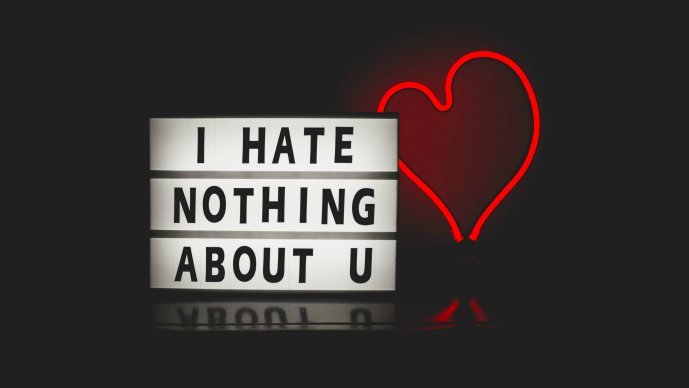Dorsey didn’t do anything wrong by bringing to the fore a social issue, which has been so entrenched in the Indian society for long

Twitter CEO Jack Dorsey, who is on his first visit to India, has kicked up a row after a photograph of him holding a purportedly “anti-Brahmin” poster went viral on social media. “Smash Brahminical patriarchy”, reads the placard, which, according to multiple media reports, was gifted to him by a Dalit (untouchable) woman, who participated in a roundtable discussion with him.
The picture — tweeted by a journalist who was part of group of activists and writers whom Dorsey met in India — drew widespread criticism not just from the civic community, but also from the political class. Fearing a backlash, a leading policy officer for the company has apologised, saying “neither Twitter nor Dorsey endorsed the sign’s message that the oppression of the Hindu caste system, which places Brahmins at the top, must be dismantled alongside male dominance”.
During Twitter CEO @jack‘s visit here, he & Twitter’s Legal head @vijaya took part in a round table with some of us women journalists, activists, writers & @TwitterIndia‘s @amritat to discuss the Twitter experience in India. A very insightful, no-words-minced conversation
pic.twitter.com/LqtJQEABgV
— Anna MM Vetticad (@annavetticad) November 18, 2018
However, the damage has already been done, with Home Minister Rajnath Singh promising “strong action” against the company, for which India is an important market. It is not known what kind of an action the government will take against the company and its CEO.
But the moot question is: “did Dorsey do something wrong by bringing to the fore a social issue, which has been so entrenched in the Indian society for long?”
Brahmins, who although form just a minuscule part of the Hindu community, has been a powerful caste in the country for more than 3,000 years. Their dominance is still so huge that a majority of them still keep a distance away from lower-caste communities, and a minor part of them still refuse to sit with, touch, or share food with them. This social evil is more deep-rooted in the central and northern India, where members of the upper-caste communities have a huge influence over the government and policy making.
Tensions between higher castes and lower-castes have been on the rise in recent years, especially after the Hindu nationalist party BJP, under the leadership of Prime Minister Narendra Modi, came to power in 2014. Modi worked in the upper caste-dominated RSS, the ideological mentor of the BJP, before entering politics.
Under Modi’s watch, the country witnessed hundreds of hate crimes — lynching, rioting, and “honour killing” by upper caste Hindus (not necessarily Brahmins) against Dalits and minorities over culture and eating habits. Many working class Muslims and Dalits were attacked or lynched to death over false allegations of beef eating, cow smuggling (cow is considered sacred by the upper-castes), and other trivial issues. However, in most cases, the authorities failed to book the perpetrators. This has further empowered the perpetrators to threaten the victims and their kin to withdraw the case against them.
Some of Modi’s cabinet colleagues have also made hate speeches against minority communities, but none of them were booked as per the Indian law. In fact, Modi himself is following many notorious hate speakers on Twitter, and even after this was brought to his attention, he has refused to unfollow them, which has created an impression among people that he somewhat endorses such hate crimes.
Things are not much better in progressive provinces like Kerala, which has witnessed several social revolutions in the bygone era and eradicated many evil rituals and customs. Can you believe that in the 18th and 19th centuries, lower-class women were not allowed to wear cloths that covered their breasts, in front of upper-caste Hindus?
It is very unfortunate that relics of the past exist even in the 21st century. In Kerala, the Brahmin community still holds the positions of chief priests in temples. Although successive governments have attempted to bring in a revolution by appointing Dalits to these posts in various state-funded temples, they are being denied entry into the sanctum sanctorum of the temple, which Brahmins say are their fiefdom.
The recent Sabarimala (a Hindu temple situated in north Kerala) agitation issue is another case in point. A few weeks ago, the apex court of India produced a landmark judgement, permitting entry for women of all ages into the hill shrine, which hitherto denied entry for women aged between 10 and 50 years over biological reasons. Angered by the verdict, the upper-caste Hindu community, including Brahmins, resorted to violence near the temple and blatantly violated the law.
In the neighbouring Karnataka (where Bangalore is situated), an evil ritual called “Made Snana” existed till a couple of years ago. Made Snana involves lower-caste devotees rolling over the plantain leaves, once food has been partaken by Brahmins. The devotees then take a Holy dip in a nearby river, after which the ritual is said to be complete.
Upper-caste hegemony is a reality in India. They are like the white supremacists in the US and they use their power and influence t0 whip up other communities. When Dorsey acknowledged — willingly or unwillingly — the existence of upper caste hegemony in India, he has, in fact, drew the attention of the tech world into an issue, which needs to be rooted out through education.
The post No, Twitter CEO Jack Dorsey didn’t make a hate speech in India appeared first on e27.